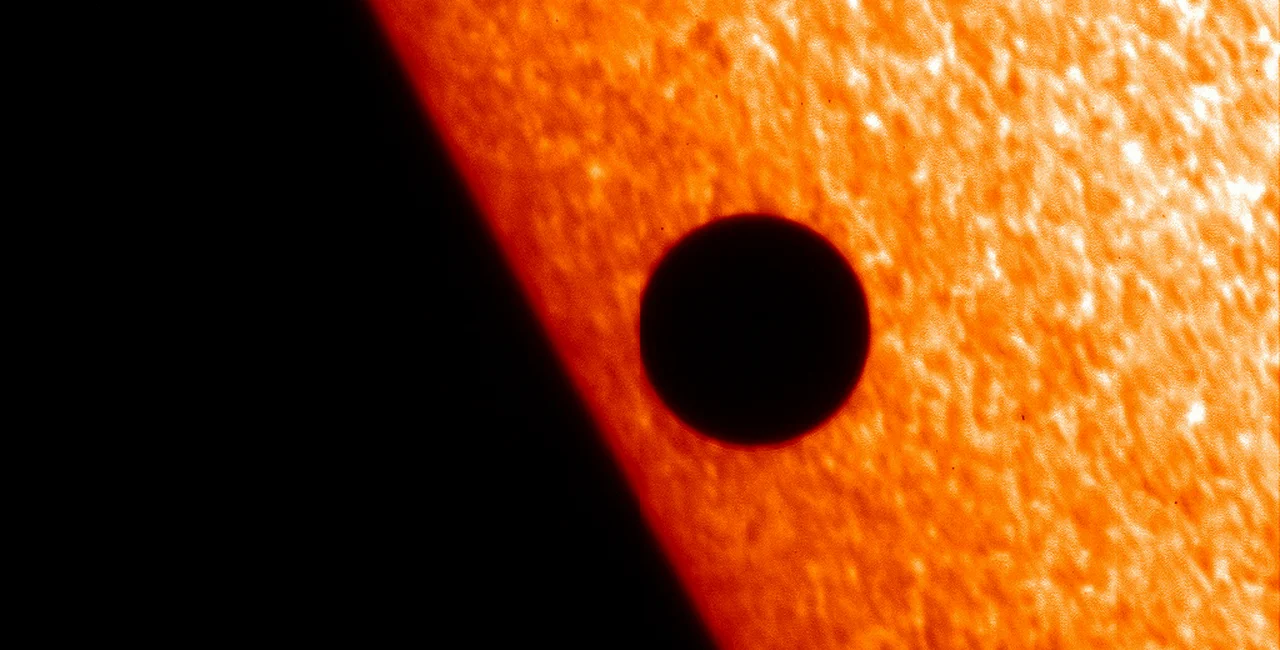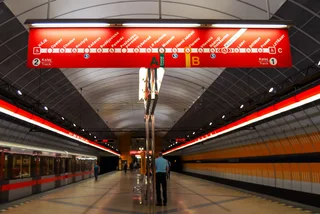If clouds cooperate, people in Prague and across the rest of Europe will be able to see the planet Mercury cross in front of the sun on the afternoon of November 11. This won’t happen again until November 13, 2032. Both of Prague’s observatories will have special opening hours so people can see it through a telescope with a protective solar filter.
Mercury crosses the
sun about 13 times per century. The technical name for a planet
crossing in front of the sun is a “transit.”
This year’s transit
will last five and half hours, but in Prague the sun will set before
it is finished. Mercury will enter the edge of the sun at 1:35 pm and
be visible until the sun sets at 4:23 pm.
The Štefánik Observatory on Petřín Hill will be open from 1 pm to 5 pm and the Ďáblice Observatory in Prague 8 from 1 pm to 4 pm. In case of bad weather, staff will present online broadcasts from other observatories. In addition, an exhibition in the main dome at the Štefánik Observatory will complement the transit.
For the general
public, though, the same rules apply as with a solar eclipse: You
should not look directly at the sun without special dark eclipse
glasses. Experts also warn not to combine binoculars and eclipse
glasses or use other do-it-yourself solutions as this will risk
serious eye damage. For safety, people should go to an observatory or
use a telescope that has quality solar filters.
“Because Mercury
is so small from our perspective on Earth, you’ll need binoculars or
a telescope with a sun filter to see it. You might also be able to
attend a viewing party at a local museum or astronomy club event,”
NASA said in a press release.
From earth, people only ever see two planets transit the sun: Mercury and Venus. Transits of Venus are more rare than those of Mercury. The next Venereal transit won’t happen until 2117.

Astronomer Johannes
Kepler, who worked at the court of Emperor Rudolf II in Prague, in
the early 1600s was the first to predict the phenomena of a transit.
He discovered that both Mercury and Venus would transit the sun in
1631, a rare occurrence in the same year.
Kepler died in 1630, so French astronomer Pierre Gassendi became the first person to see the transit of Mercury through a telescope. The transit of Venus could not be seen from Europe, though.
Astronomers realized
that transits could be used to make more precise measurements of
planets’ diameters. Edmond Halley in 1677 also worked out that
differences in transit data from distant observatories could be used
to calculate the distance of the earth to the sun.
And scientists can
still learn something. “When Mercury is in front of the sun, we can
study the exosphere close to the planet. Sodium in the exosphere
absorbs and re-emits a yellow-orange color from sunlight, and by
measuring that absorption, we can learn about the density of gas
there,” said NASA scientist Rosemary Killen said on the Nasa
website.
If you want to see Mercury and Venus cross the sun on the same day, just 16 hours apart, you have to wait until September 17, 13425 (that is not typo). This same-day event previously occurred in 90109 BC. Both planets transited at exactly the same time in 373173 BC.












 Reading time: 2 minutes
Reading time: 2 minutes 























